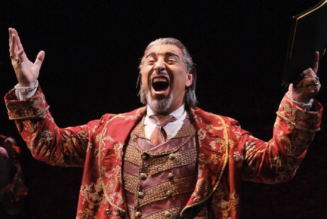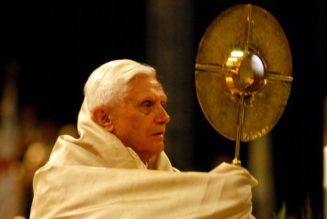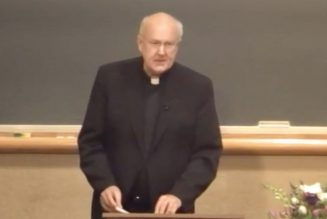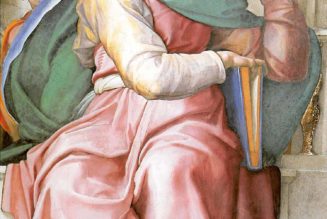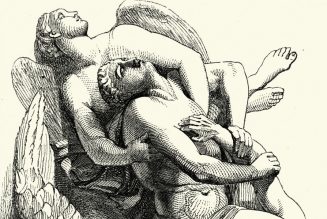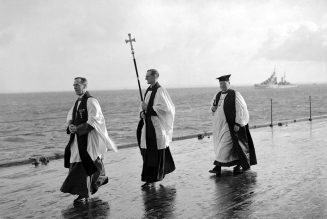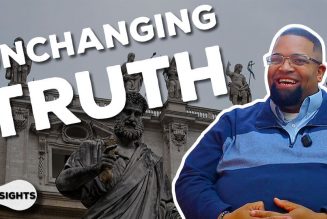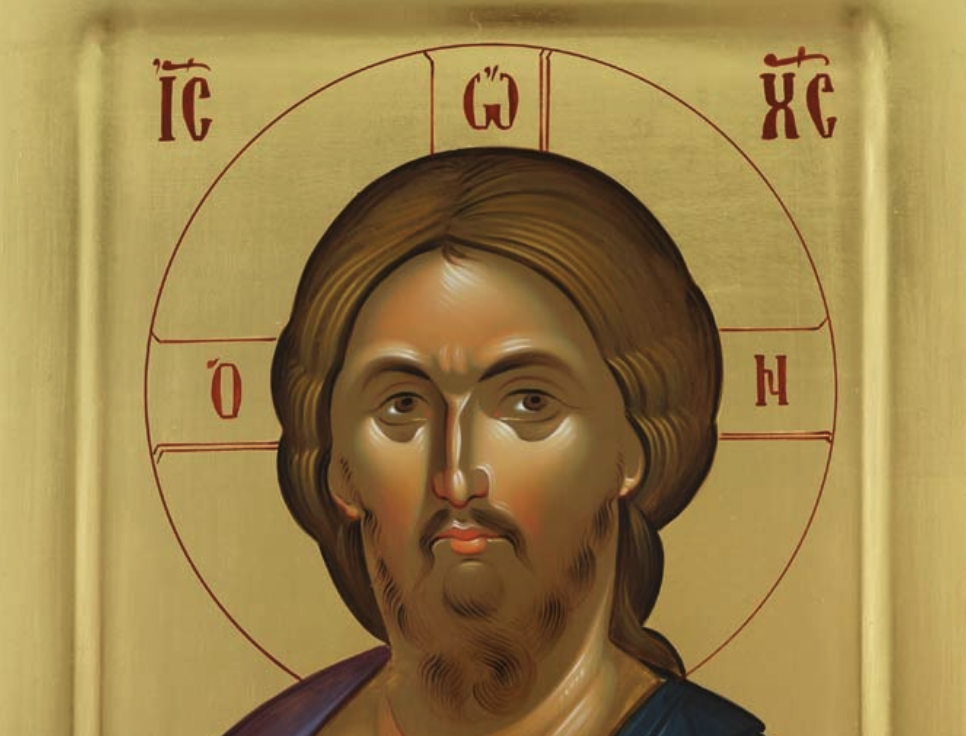
Let’s start here: There is nothing new about artists painting images of Jesus as a Black man.
A few of these images may have been controversial at the time of their creation, in part because of the political motivations of some (repeat “some”) artists. But the vast majority are clearly works of Christian devotion showing reverence for the Incarnation of Jesus Christ. For many Christians, these images are way less problematic than the omnipresent Warner Sallman “Head of Christ” painting from 1940, depicting Jesus with light, wavy hair and very European features.
As an Eastern Orthodox Christian, the image of Jesus that I know best is the ancient Christ Pantocrator icon from St. Catherine’s Monastery at Mt. Sinai. It is a complex icon of Jesus that, well, would be hard to label as one of the “surfer Jesus” images in some contemporary churches.
This brings me to that New York Times story that ran the other day with this dramatic double-decker headline:
A Painting of George Floyd Roils Catholic University
At the Catholic University of America in Washington, conservative students called for a campus ban on further displays of an artwork that depicts Floyd as Jesus.
This story does a pretty good job of describing the timeline of this controversy — which is described as yet another clash over race, art and religion. It’s clear that, for the leaders of private schools, controversies of this kind are especially complex.
The problem, for me, is that the image in question — “Mama,” by Kelly Latimore — is consistently described as a painting based on the famous Pieta statue by Michelangelo.
Thus, what we have here is a “painting,” based on one of the most famous statues in Western Christian art, but is clearly meant to be interpreted as a holy icon in the Eastern Orthodox tradition.
Did you follow that? The journalism question here is whether the Times team did an adequate job of describing why the term “icon” — which does not appear in the story — is so important, if the goal is to understand the thinking of some of the Catholics (the story contains zero input from the Orthodox) who believe that this painting is blasphemous. Here is the overture:
In the summer of 2020, shortly after the murder of George Floyd, Kelly Latimore, a white artist who grew up surrounded by images of a white Jesus, decided to make a course correction. He’d paint the Virgin Mary and Jesus with gold halos encircling their heads — and both would be Black.
Also, his image of Jesus would resemble Floyd, a Black man who had been killed by a white police officer in Minneapolis.
The painting, titled “Mama,” attracted little notice in February after a copy was installed at the law school of the Catholic University of America in Washington.
Eventually, news coverage drew attention to a copy of this painting displayed at the law school of the Catholic University of America in Washington, D.C. In November, students created a petition calling for the removal of the image.
Then the painting was stolen. Let’s go back to the Times report:
The university replaced it in November with a smaller copy — the school’s policy was “not to cancel speakers or prevent speech by members of the community,” the university’s president, John H. Garvey, said in a statement after the theft — but now that copy, too, has been stolen. And the student government has passed a resolution calling for further displays of the work on campus to be banned, citing religious objections.
According to these critics, the “figure in the arms of Our Lady” is a “divinized George Floyd.” For these students the painting was creating “confusion,” as well as controversy.
Why would Catholic critics of this work (again, the story contains no input from Orthodox scholars) believe that it contains — rather than an image of Jesus as a Black man — a “divinized” Floyd? Back to the story:
The law school has taken the stance that the painting depicts Jesus, not Floyd, pointing to religious symbols such as the Greek letters in the halo that signify the divinity of Jesus. But Latimore has said it was created to mourn Floyd’s death. …
Latimore, 35, said he always responds “yes” when asked whether the painting depicts Jesus or Floyd.
“It’s not an either-or scenario,” he said in a phone conversation this week. “Is it George Floyd? Yes. Is it Jesus? Yes. There’s sacredness in every person.”
Ah. What about those letters in the halo?
This is where the word “icon” is essential. In Orthodox iconography, saints have golden halos — such as the one surrounding St. Mary in the Latimore image. In Orthodox icons, the halo for Jesus Christ contains, as the Times story states, “Greek letters in the halo that signify the divinity of Jesus.” This is a theological statement about the unique nature of Jesus and the Holy Trinity.
For more information, click here for an Orthodox Arts Journal essay on this subject. Here is a small piece of that:
These letters form the present participle, ὤν, of the Greek verb to be, with a masculine singular definite article, ὁ. A literal translation of Ὁ ὬΝ would be “the being one,” which does not mean much. “He who is” is a better translation. These words are the answer Moses received on Mount Sinai when he asked for the name of him to whom he was speaking. In Hebrew, he who was speaking said Yahweh, which is also a present participle. Greek translators of the Hebrew Bible put Yahweh as Ὁ ὬΝ.
The Latimore painting includes hints at this tradition, but with one of the letters out of sequence. Was the error an attempt to avoid blasphemy? That would have been an interesting question to ask.
But here is the crucial point: The Times team urgently needed to seek input from someone who could explain why Western Christian paintings of Jesus as a Black man are not controversial, but the creation of an Eastern Orthodox icon in which George Floyd becomes Jesus Christ — the “He who is” of Sinai — would create confusion, anger and pain.
Truth is, an art exhibit at Catholic University containing dozens of African-American church images of Jesus as a Black man would have created zero controversy. If Latimore had created a painting that was clearly based on the Pieta statue (with no halos and without the Greek letters seen in icons of Jesus), I doubt there would have been a hurricane of dissent.
Here is how the artist described his own work:
Latimore, who has painted inspirational Black figures such as the Rev. Dr. Martin Luther King Jr., the abolitionist Frederick Douglassand the civil rights activist and congressman John Lewis, said in an interview in April with The Christian Century magazine that in “Mama,” he made a decision to change the traditional Pietà style to call attention to “prayer and action.” Rather than looking at the body of Jesus, the Virgin Mary is looking at the viewer.
“She’s asking, ‘What are you going to do so this doesn’t keep happening?’” Latimore said.
That Christian Century article refers to Latimore as an iconographer and variations on the term “icon” are used 30 times in that essay.
Painting or icon?
The New York Times never asked that question. Thus, it was impossible to accurately describe, for readers, why some Catholics — Eastern-Rite Catholics, perhaps — were so upset about this image.
FIRST IMAGE: A screen-grab image of a Christ Pantocrator icon based on the iconography in the Hagia Sophia cathedral, available through the Blessed Mart website.
Join Our Telegram Group : Salvation & Prosperity
